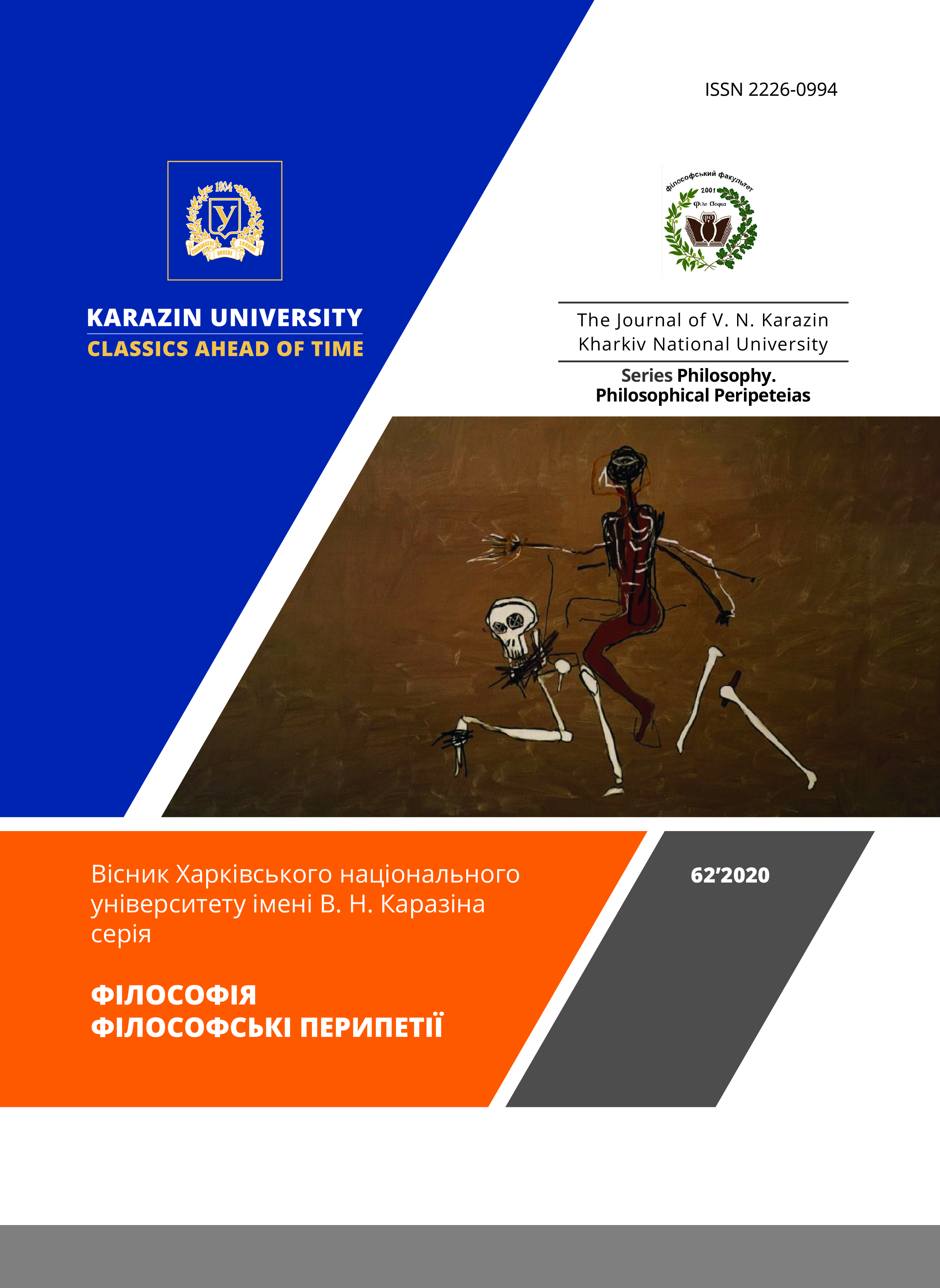HOBBES'S GHOSTS OR WHY YOU SHOULDN'T FEAR LEVIATHAN
Abstract
The idea is considered that T. Hobbs’s “Leviathan” is not only a particular example and a representation of classical Western European thinking, but turns out to be some “metatheoretical” place, in which the very potentiated field of the opportunity of clarification, and very production of a social order problem, and, ambivalently – all socio-theoretical discourse is formed. According to the author, after T. Hobbes problems which are “strategic” for all modern theoretical sociology and which, at the same time, are constitutive for her can be put. What “art” – which is in the middle of the life, in the middle of human reality – can collect particular human existence in the uniform and coordinated been, acting for the benefit of all? How does it turn out in such a way that creation which “master”, according to Hobbes, is the person gains universal dimension? How is transition owing to which individual free figures get the lives unified way which substantially is represented the general state is carried out? Whether such a transition is possible? How to think of it? By what force on what basis, according to what principles, by the action of what algorithm, due to what structure small figures keep in borders of a body of the Leviathan? The solution which is proposed by Thomas Hobbes for a problem of social order – that is the public contract on the utilitarian basement – has, on the belief of the author, secondary value in the face of opening by Hobbes the matrix of the social-theoretical thinking. Thus, contradictions and discrepancies which can be found in the text by Gobbes, the author seeks to consider as “a point of growth of a discourse” and as fixing and registrations of potential opportunities of the discourse of social order, as well as the phenomenon of society itself.
Downloads
References
/References
Gumbrecht, H. U. (2006). Production of Presence. What Meaning Cannot Convey. (S. Zenkin, Trans.). Moscow: Novoye literaturnoye obozrenie – New literary review. (Original work published 2004). (In Russian).
Hobbes, T. (1991). The Collected writings in 2 Vols. (Vol. 2). (N. Fedorov, A. Guterman, Trans.). Moscow: Mysl’. (In Russian).
Hobbes, T. (2017). Leviathan. (A. Guterman, Trans.). Moscow: RIPOL classic. (Original work published 1651). (In Russian).
Maschke, G. (1982). To the “Leviathan” by Carl Schmitt. In C. Schmitt, The Leviathan in the State Theory of Thomas Hobbes: Meaning and Failure of a Political Symbol (рр. 179–244). Köln-Lövenich: Hohenheim Verlag. (In German).
Parsons, T. (2002). On the Structure of Social Action. (I. Bakshtein, G. Belyaeva, L. Sledov, V. Chesnokova, Trans.). Moscow: Akademichesky proect – Academic project. (Original work published 1937). (In Russian).
Гоббс Т. Сочинения: в 2-х т.; т. 2 / пер. с лат. и англ. Н. Федорова, А. Гутермана М.: Мысль, 1991. 731 с.
Гоббс Т. Левиафан / пер. с англ. А. Гутермана. М.: РИПОЛ классик, 2017. 608 с.
Гумбрехт Х. У. Производство присутствия: чего не может передать значение / пер. с англ. А. Зенкина. М.: Новое литературное обозрение, 2006. 184 с.
Парсонс Т. О структуре социального действия / пер. с англ. И. Бакштейн, Г. Беляева, Л. Следов, В. Чеснокова. М.: Академический Проект, 2002. 880 с.
Maschke G. Zum “Leviathan” von Carl Schmitt. Carl Schmitt. Der Leviathan in der Staatslehre des Thomas Hobbes: Sinn und Fehlschlag eines politischen Symbols (Mit einem Anhang sowie mit einem Nachwort des Herausgebers). Köln-Lövenich: Hohenheim Verlag, 1982. S. 179–244.

This work is licensed under a Creative Commons Attribution 4.0 International License.
Authors who publish with this journal agree to the following terms:
- Authors retain copyright and grant the journal right of first publication of this work under the terms of a license Creative Commons Attribution License 4.0 International (CC BY 4.0).
- Authors are able to enter into separate, additional contractual arrangements for the non-exclusive distribution of the journal's published version of the work (e.g., post it to an institutional repository or publish it in a book), with an acknowledgement of its initial publication in this journal.
- Authors are permitted and encouraged to post their work online (e.g., in institutional repositories or on their website) prior to and during the submission process, as it can lead to productive exchanges, as well as earlier and greater citation of published work.






3.gif)




